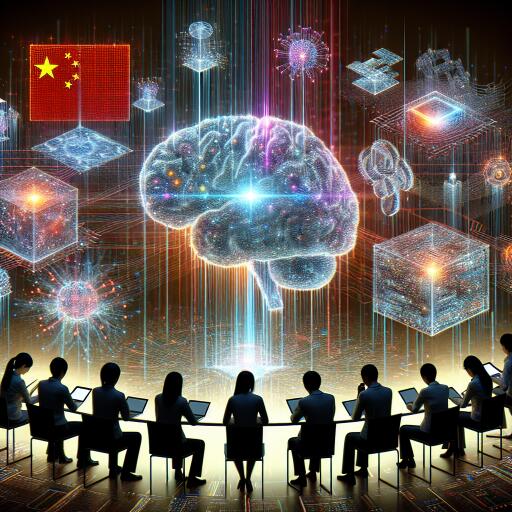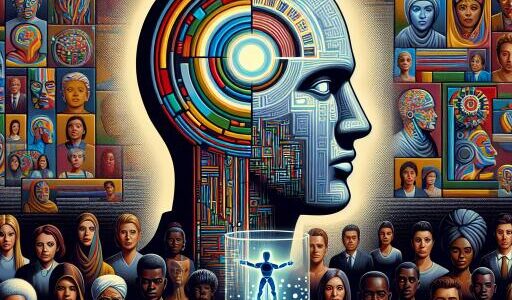Chinese Researchers Crack OpenAI’s o3 Groundbreaking AI Models
In a remarkable exploration of artificial intelligence, researchers from Fudan University and Shanghai AI Laboratory have delved into the sophisticated workings of OpenAI’s o1 and o3 models. These models are acclaimed for their extraordinary reasoning capacities, marking pivotal steps toward achieving Artificial General Intelligence (AGI). They excel in resolving complex issues across various domains, such as mathematics, logic, and scientific inquiry through innovative methods.
OpenAI’s o1 and o3 models signify a significant leap in AI development. These are not just mere data processing systems; they exhibit reasoning, adaptation, and problem-solving expertise akin to human proficiency. This breakthrough represents a major progression in AI, empowering systems to tackle intricate challenges with enhanced precision.
The profound insights from the researchers highlight the innovative methodologies that underpin these systems. Such methodologies enable the AI to improve its responses during the inference stage, dynamically, showcasing the potential of reasoning-based AI and setting the stage for exciting future innovations.
What sets the OpenAI o1 and o3 models apart is their ability to emulate human-like reasoning during inference. Diverging from conventional AI systems that stick to static responses, these models employ a dynamic approach—breaking down problems, analyzing tasks, engaging in self-evaluation, and iteratively correcting errors. This dynamic adaptability helps them operatively manage complex tasks in real-time, aligning their results with expertise that can be compared to a Ph.D. level in fields like coding, mathematics, and logic. Their adeptness in thinking and evolving dynamically distinguishes them as exceptionally effective in tackling challenges that demand nuanced reasoning and flexibility.
The advanced problem-solving abilities of these models are built upon four foundational pillars, enabling them to bridge the gap between narrow AI and AGI through tackling increasingly complex tasks.
The emergence of reasoning-based AI models marks a paradigm shift from traditionally self-supervised learning towards reinforcement learning frameworks. This transition has facilitated the creation of scalable and adaptive systems that are capable of managing increasingly complex tasks. Through scaling computational resources for both training and inference phases, researchers have significantly bolstered these models’ performance. The rise of open-source reasoning-based AI projects has also fostered enhanced collaboration in the AI research community, expediting innovation and broadening access to advanced AI technologies.
Despite their groundbreaking capabilities, the OpenAI o1 and o3 models face certain challenges that must be addressed for their full potential to be realized. Key areas for development include:
- Enhancing understanding of diverse contexts and scenarios.
- Improving efficiency in resource use.
- Ensuring better interpretability of AI decisions.
- Addressing ethical and safety concerns.
Overcoming these challenges is crucial for enhancing the practical application and reliability of reasoning-based AI systems, which could widen their adoption across various sectors.
A distinctive feature of the OpenAI o1 and o3 models is their employment of “test-time compute,” allowing the allocation of additional computational resources during inference. This method enables real-time refinement of responses, improving accuracy and performance in complex problem-solving tasks. By iterating solutions during inference, test-time compute represents a significant shift in how AI systems address complex challenges. This capability not only heightens their problem-solving efficiency but positions them as indispensable tools for tackling tasks that necessitate high adaptability and clarity.
Reinforcement learning has emerged as a potent alternative to conventional AI training methodologies. By enabling models to learn through trial and error, reinforcement learning reduces the dependency on human-labeled data and empowers AI systems to discover original solutions. Consider AlphaGo, which utilized reinforcement learning to develop strategies in the game of Go that exceeded human intuitiveness. Similarly, OpenAI’s o1 and o3 models harness reinforcement learning to attain superhuman performance in specific areas, highlighting the potential of this approach to propel AI into realms of innovation and autonomy.
The inception of open-source projects such as DeepSeek, R1, and Open 01 illustrates a burgeoning interest in democratizing access to advanced reasoning AI technologies. These initiatives aim to replicate and amplify the capabilities of OpenAI’s models, thus promoting global collaboration among researchers and developers. By championing open innovation, these projects hold the potential to accelerate strides toward AGI, broadening the array of applications for reasoning-based AI systems. Open source initiatives are also pivotal in democratizing AI advancements, ensuring inclusivity and diversity in AI research.
The advancements signified by OpenAI’s o1 and o3 models represent significant strides toward the realization of AGI. These systems underscore AI’s potential for self-improvement and seamless integration into real-world applications. Future enhancements could see AI systems revolutionizing sectors like healthcare, engineering, and education, offering unparalleled intelligence and adaptability. As open source collaborations and reinforcement learning frameworks evolve, the boundaries of artificial intelligence will likely be redefined, unlocking new prospects for innovation and societal impact.










